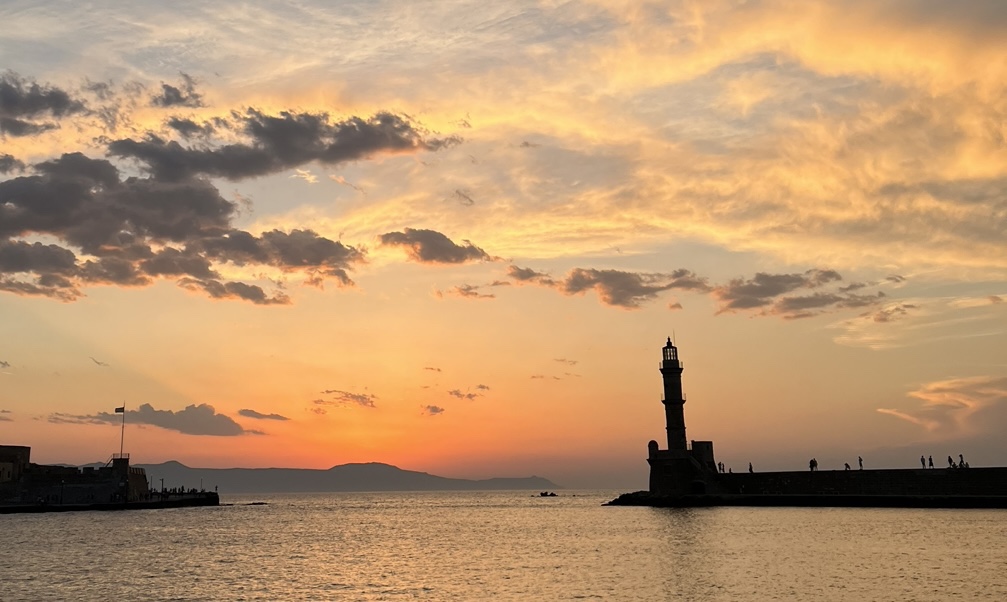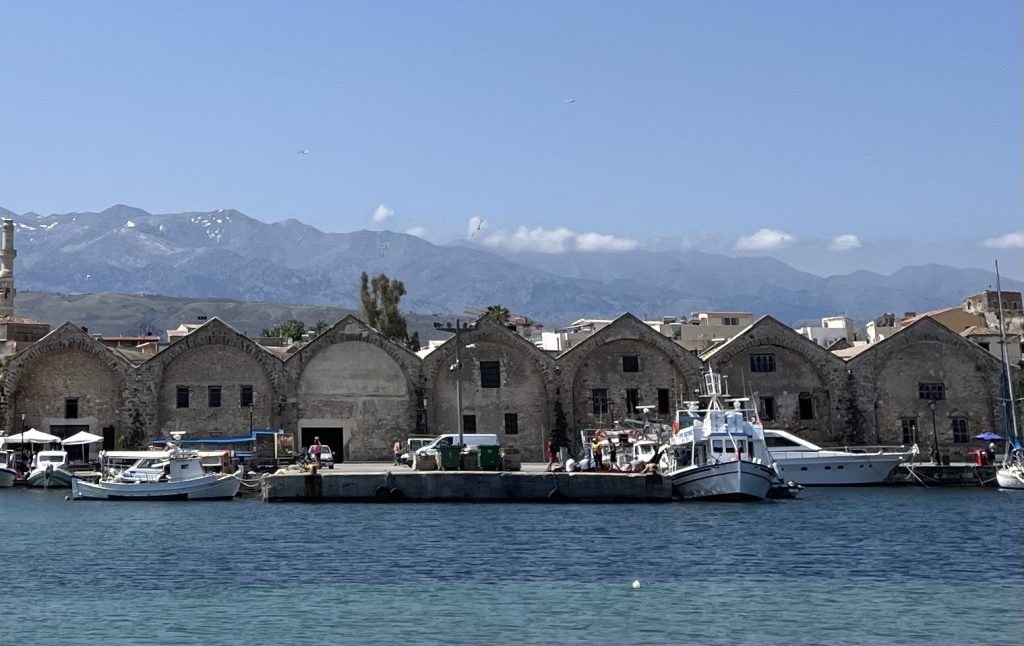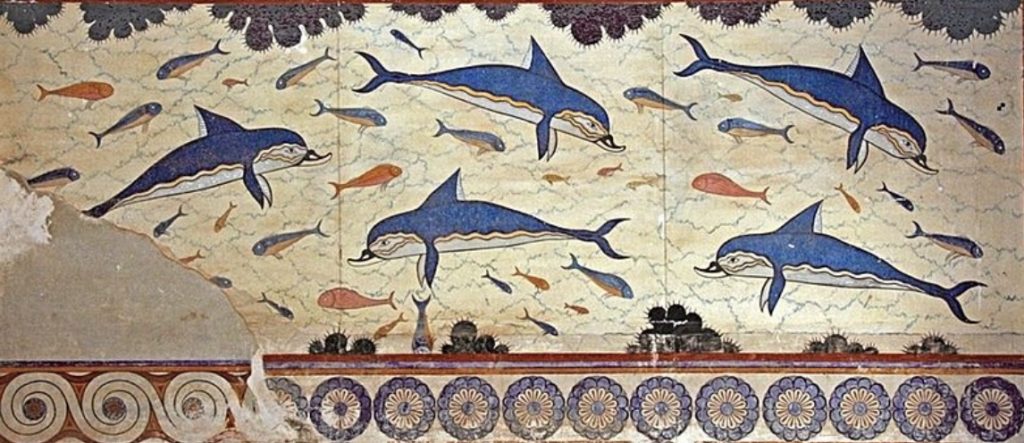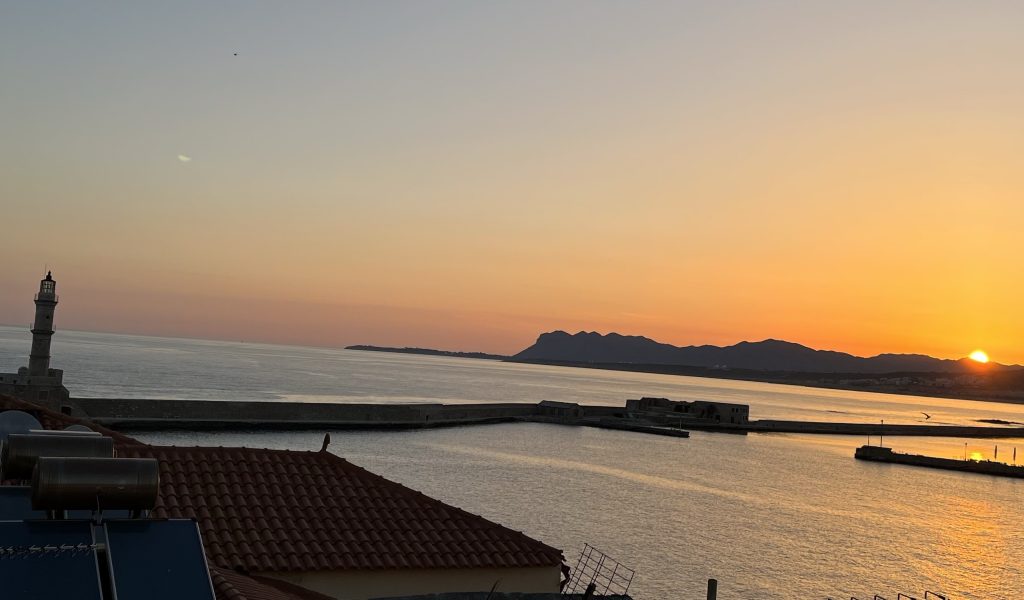
Sunset
I took the picture above last night as the sun slipped away behind Chania’s lighthouse, one of the oldest in the world. It’s known as the Egyptian lighthouse, although built by the Venetians in 1570. After falling into disrepair the Egyptians restored it in the fashion of a minaret in the late 19th century.
Over the years Crete’s lived through multiple occupations. Its history is complex. In Chania, Byzantine, Venetian and Ottoman buildings survive, and the remnants of some Ancient Greek. Excavations this century even unearthed stone tools at least 130,000 years old. I find such figures hard to get my head around and try by imagining them in lifetimes of around 70 years, because that’s all we’ll ever know (if we’re lucky), so that’s 1,857 lifetimes ago.
Venetian occupation of Crete lasted almost five hundred years, during which their shipping fleet dominated the Mediterranean. The picture below is of the seven remaining Neoria, across the harbour from the lighthouse, where ships would be repaired and maintained. You can just see the last bits of the winter snow up on the mountains. It was 33° the day before I took the picture but it’s still hanging on.

Cast your mind back a few thousand years more and the earliest Minoan civilisation began here on Crete, around 3500 BC, developing eventually into the first advanced civilization in Europe and described as ‘the first link in the European chain’ (Durant). The Minoans built labyrinthine, multi-storey palaces kitted out with complex plumbing systems and decorated with frescos depicting scenes of dancing, sports and dolphins. None featured warfare.

Anyway, the point of this post, such as there is one, wasn’t to show off my photographic skills or my meagre knowledge of Cretan history. It was to marvel at the spectacle of what was on the other side of the camera when I took the lighthouse picture at the top of the page, in the civilisation in which we live today.
From the sun’s vantage point, lined up along the harbour last night there was a multitudinous string of human beings holding smartphones up to the sun. It was a sight to behold. Had an alien starship passed over the harbour at sunset the crew could have been forgiven for thinking that we’re still a primitive, sun-worshiping civilisation. I’ll take a picture of the sun watchers tonight if I remember.
Update
I forgot to take the picture but the one below shows the lighthouse at dawn, once the Earth’s gone full circle. Not a soul in sight and the only sounds were the ever present slosh of the sea and the whistle of swifts swooping and diving around the bay. Sunsets tend to pull more crowds because we’re generally up and about when they happen. But they put on a better show than sunrises anyway because the air’s warm and there’s dust and moisture floating around that plays with the light. The relative chill of the morning air means that nothing much has risen, us included, so there’s less stuff floating around for the light to play with. That’s what a geeky science blog just told me anyway.

Certainly was a stunner. I’m enjoying your blog and the mix of historical info and personal details.
Thanks. And I’ve honoured my pledge – I haven’t posted on ouzo. Yet! x